A walk by the pine trees, by the ocean
Taean offers scenic trail courses and great local cuisine
By Korea HeraldPublished : June 26, 2013 - 19:20
This is the fourth installment in an 11-part series that introduces some of the best walking trails in Korea. Based on each trail’s popularity and the recommendations of travel experts and the Culture Ministry, The Korea Herald selected the 10 best places for walking and hiking. The series received funding from the Korea Press Foundation. ― Ed.
TAEAN, South Chungcheong Province ― The 2007 oil spill in Taean, South Chungcheong Province, was Korea’s worst oil spill ever, dumping more than 12,000 tons of crude oil into the West Sea near the beautiful coastal county.
The spill, which occurred when a Samsung Heavy Industries barge carrying a construction crane slammed into an anchored Hong Kong-registered tanker, severely affected the region’s famous fishing and tourism industries.
TAEAN, South Chungcheong Province ― The 2007 oil spill in Taean, South Chungcheong Province, was Korea’s worst oil spill ever, dumping more than 12,000 tons of crude oil into the West Sea near the beautiful coastal county.
The spill, which occurred when a Samsung Heavy Industries barge carrying a construction crane slammed into an anchored Hong Kong-registered tanker, severely affected the region’s famous fishing and tourism industries.
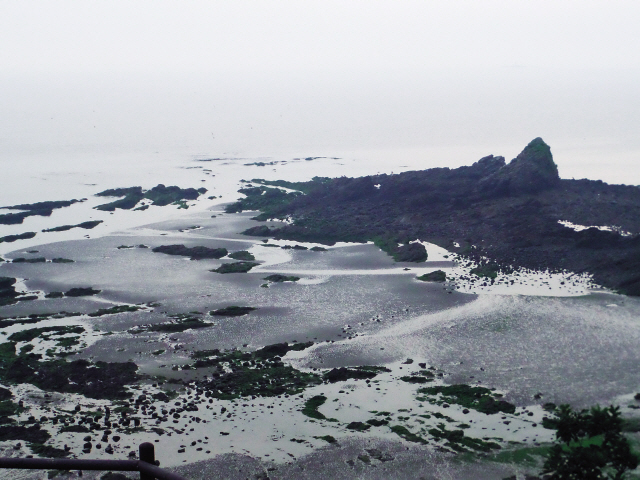
About six years have passed, and the region now offers scenic, seaside walking trail courses that follow the coast of Taean.
“It was one of the ways to help the region’s tourism industry,” said Cheon Hong-lae from Korea National Park Service’s Taeanhaean National Park. “We are hoping to attract more visitors so local residents can benefit from it.”
Taean is most famous for its clear seas, tidal flats, white sand, scenic beaches and coastal flora. Following the 2007 disaster, hundreds of thousands of volunteers helped clean up, walking back and forth through Taean’s forests and coastlines. Some of the walking courses of the county, including Solhyanggigil, were once walked by the volunteers.
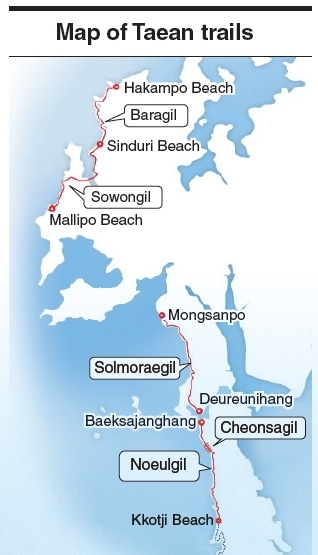
The two most famous walking courses are Noeulgil and Solmoraegil, which follow the coastline. Both courses opened in 2011. While Noeulgil means “the road of sunset,” Solmoraegil means “the road of pine trees and sand.” The courses are part of Taeanhaean National Park, which includes Taean’s 26 beaches along the 230-kilometer coastline. There are more than 1,100 animal species, 774 plant species and 671 marine species living in the park area.
Among two trail courses, Noeulgil stretches from Anmyeon-do Island’s Baeksajanghang port to the famous Kkotji Beach. The 12.6 km course is known as one of the country’s best spots to watch the sunset. Solmoraegil, on the other hand, stretches from Mongsanpo Beach to the Deureunihang port. The 12.7 km course lets one experience Taean’s seaside forests of pine trees as well as pristine white sands.
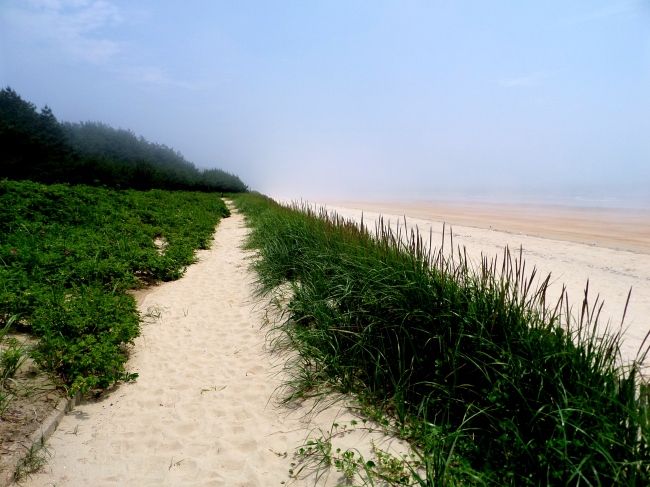
“Pine trees have always been in Taean county,” says Cheon from Korea National Park. “But a lot of them were also planted near the coastline to block the sand and strong sea winds.”
Walking the trails makes one realize why Taean is named Taean, meaning “big comfort”; the region has rarely suffered through major natural disasters throughout history while being blessed with a mild climate and abundance of seafood. The pine trees blend well with the distinctive coastline scenery that can only be found along the West Sea ― the foreshores, sand dunes, mystical rocks and islets. Both Noeulgil and Solmoraegil are easy walks, though for beginners it could be overwhelming to walk more than 10 km a day, especially under the blazing sun.
Cheon from Korea National Park suggests walking about 3 km to 4 km for beginners, instead of trying to walk the entire course.
“Many like to walk from Mongsanpo Beach to the Cheongpodae Beach, which is the first 4 km of the Solmoraegil,” he says. “The course isn’t too challenging and offers a lot of shade as you mostly go through the pine tree forest. I would hit Cheongpodae Beach and slowly go back to Mongsanpo.”
Last weekend, there was hardly anyone seen at the trail courses. Most people visit Taean, especially its Anmyeon-do Island, for the beaches and camping. The beaches were indeed packed with swimmers and campers, enjoying the water and Korean barbecue.
“I had no idea these trail courses existed,” said Kim Joo-ae, a housewife from Incheon who was having a short walk near the Cheongpodae Beach on Saturday. “I thought these trails are just for the Cheongpodae Beach. I didn’t know these are connected all the way from Mongsanpo to Deureunihang port. ”
Noeulgil and Solmoraegil were a quiet walk, as there was no one else on the trail. The guidebook said it takes about 4 hours to complete each course, but it could take some more than 6 hours.
The walk from Gijipo Beach to Batgae Beach, which is part of Noeulgil, was enjoyable. The particular walk ― about 4 km to 5 km ― was the most comfortable mainly because it required no hiking. The walk also offers a wooded trail following the relatively quiet and serene coastline of Gijipo and Batgae beaches. The walk offers breathtaking sunset views, though cloudy weather does not afford any view of the sun going down over the horizon.
One may also find the trail’s direction signs a bit confusing, as they disappear at certain points.
“We’ve heard some of the signs are either damaged or taken away by the travelers,” said Kim Joo-won, a promoter at Korea National Park Service. “We are still working on ways to promote the courses better and take better care of the direction signs as well.”
Walking the trail courses may be more ideal during the spring or autumn periods, as the heat can make it difficult in the summer. However, the Taean walking courses are certainly worth checking out ― they offer a slow, personalized experience with Taean’s beautiful tidal flats and white sands, as well as the seaside pine trees.
For more information about the walking courses, visit Korea National Park Service at taean.knps.or.kr.
By Claire Lee (dyc@heraldcorp.com)
Aside from the trail courses, Taean offers plenty of seafood choices for its visitors. Here are a few suggestions for those who would like to try Taean’s regional cuisine as well as enjoy fresh raw fish at a reasonable price.
Ganjang gejang and crab ssambap
One of the regional specialties of Taean is ganjang gejang, fermented seafood made by marinating fresh raw crab in soy sauce. The dish is known for its briny taste, which goes well with steamed rice. While gejang in Taean is something that is certainly worth checking out, if you would like to try something that isn’t as common, try crab ssambap along with gejang.
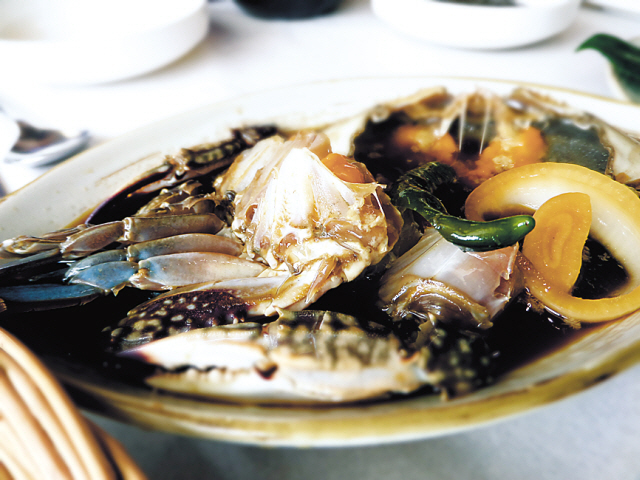
Songjeong Kkotgejip, a restaurant on Taean’s Anmyeon-do Island, offers a unique ssambap ― ssambap literally means “wrapped rice” in Korean ― which is served with rice and crab meat mixed with kimchi and other seasonings. Fresh Korean lettuce is used to wrap steamed rice and the crab meat together at the table by the diner.
The ssambap is a specialty of Songjeong Kkotgejip. One can also make his own bibimbap instead, mixing the rice, lettuce, seaweed and the seasoned crab meat in one large bowl. Crab ssambap and ganjang gejang each cost 20,000 won.
Songjeong Kkotgejip: 1290-31 Seungeon 8-ri, Anmyeon-eup, Taean-gun, South Chungcheong Province; (041) 673-2666.
Bangpo Soosan (Fish market)
If you are looking to find raw fish at cheap prices, Taean’s Bangpo harbor is a must to check out. The harbor is located near the famous Kkotji beach: Both spots can be visited by walking Taean’s fifth trail course, Noeulgil. At the harbor’s fish market, named Bangpo Soosan, one can buy live fish ― including crab, soft shell clam, olive flounder and snapper ― and watch the fish chopped and then sliced into thin pieces on the spot, which is quite an experience.
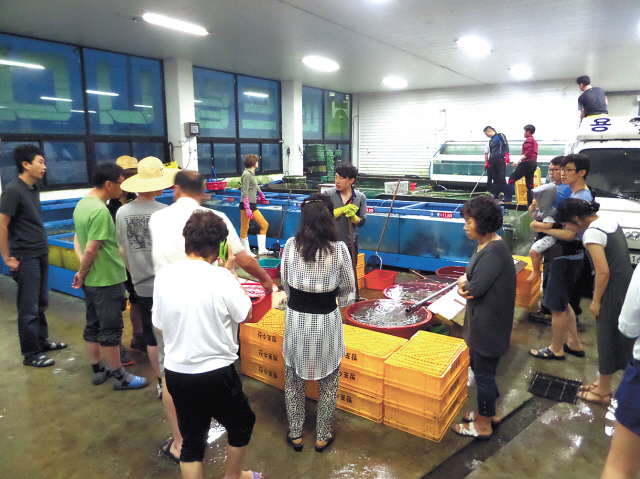
The price is surprisingly low ― one can get a whole snapper and have it prepared as sashimi for 16,000 won, which is normally served at restaurants in Taean for anywhere between 80,000 won and 100,000 won for two. Once the fish is prepared, one can take it to the venue near the market and enjoy it there. Take-out is also available.
Bangpo Soosan: 1317-19 Seungeon-ri, Anmyeon-eup, Taean-gun, South Chungcheong Province; (041) 673-3311.
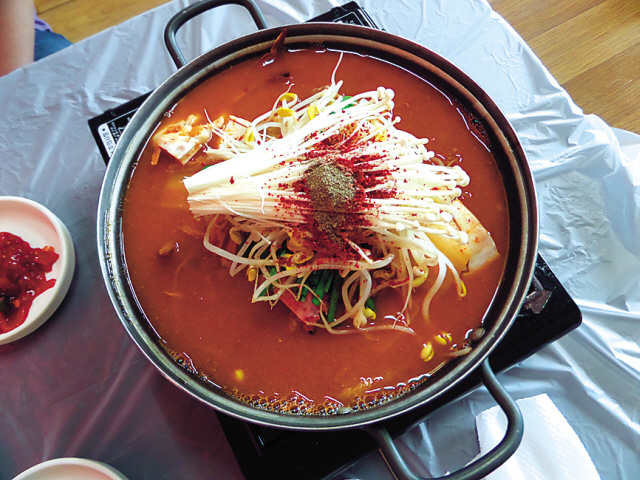
Gegukji
Kimchi jjigae is undoubtedly Korea’s iconic dish. It is typically made with kimchi, diced tofu, and pork or canned tuna, but on Anmyeon-do Island, the classic stew dish is given a twist with the addition of crab. Gegukji, the region’s localized version of kimchi jjigae, uses blue crab instead of pork or canned tuna, on top of fermented kimchi. It tastes somewhat like a cross between the typical kkotgetang (blue crab stew which usually does not include kimchi) and the traditional kimchi jjigae, with a distinctive rustic flavor.
Gegukji gained its sudden popularity last year after it was featured on an episode of the popular KBS reality-variety show “1 Night 2 Days.” The dish is now easily found on Anmyeon-do Island, as most of local restaurants in the region offer it. It is, however, a bit pricy ― the price usually ranges from 40,000 won to 50,000 won for two people.
By Claire Lee (dyc@heraldcorp.com)
-
Articles by Korea Herald











![[Hello India] Hyundai Motor vows to boost 'clean mobility' in India](http://res.heraldm.com/phpwas/restmb_idxmake.php?idx=644&simg=/content/image/2024/04/25/20240425050672_0.jpg&u=)








